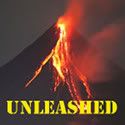What is happening to Marikina River has been replicated in many places in the Philippines where greedy developers and building owners likewise encroached on waterways such as rivers and its tributaries or esteros as commonly termed in Manila and its adjoining cities and municipalities. Thus, Sen. Manuel Villar, Jr.'s Senate Bill 2956, also known as Housing Ban Along Riverbanks Act of 2011, is indeed very timely for as the good Senator stated in the news item carried by the Philippine STAR of September 13, 2011: "This bill aims to ban the construction of houses along riverbanks, waterways and banks of inland waters in order to prevent the loss of lives and property during heavy storms and floods."
Of course, as always, the devil will always be in the matter of implementation and the strict monitoring of violations by all sectors of government, particularly on the local government level. But, with the overwhelming devastation wrought by the likes of "Ondoy" and "Pepeng", preventive measures should be done to avoid repetition considering that more typhoons are predicted to come before the year end.
The Philippines is definitely facing a tumultuous future where the Philippine STAR's Editorial of September 13, 2911, described it as a high-risk country. Quoting further said editorial, there is a World Risk Index "which covers 173 countries, was developed by the United Nations University Institute for Environment and Human Security in Germany. The index ranked the Philippines as the third country with the highest vulnerability to disasters, next to Vanuatu and Tonga. The Philippines was ranked worse than the Solomon Islands, Guatemala, Bangladesh, Timor-Leste, Costa Rica, Cambodia, El Salvador, Nicaragua, Papua New Guinea, Madagascar, Brunei and Afghanistan.
The ranking was based on several factors, among them exposure to disasters, where the Philippines garnered a score of 45.09 percent; vulnerability, where it got 53.93 percent; and susceptibility, 34.99 percent. But the country received its lowest score in its coping capacity, where its lack was rated at 82.78 percent. In the lack of adaptive capacity, the country also garnered a score of 44.01 percent. Despite scientific advances, nature remains unpredictable. The best that people can do is improve disaster risk preparedness and mitigation.
As the World Risk Index showed, the Philippines has a lot of work to do in these areas. The country does not have sufficient capability even to track the amount of rainfall that can be triggered by monsoons or brought by typhoons, lowering the capacity to prepare the public for flooding. .... Sustainable forestry, better solid waste management, clearing flood-plains and better zoning, improved disaster warning systems, and increased capability for relief efforts are among some of the measures that can be adopted, until the science of disaster prediction improves."
Based on the above assessment, the Philippines has a virtual mission impossible to develop and improve its abysmal 17.22 percent score in coping capacity with its government practically crippled by financial limitations and bureaucratic inefficiency which even an honest Aquino administration is incapable to inspire to passable achievement. Only the coming days will reveal the final outcome of what will be, good or worse contrary to expectation.





0 comments:
Post a Comment